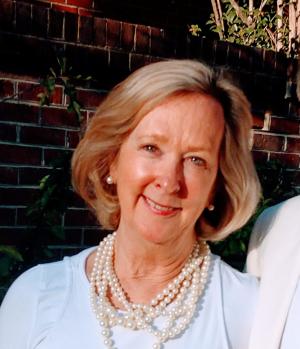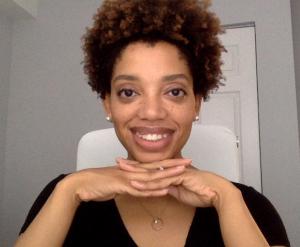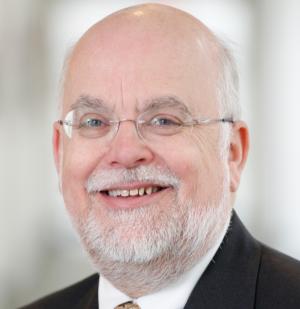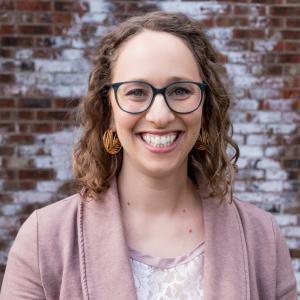Blogs

When Covid-19 became a pandemic, I was not ready to make a transition to online teaching out of the blue, in the middle of the course period, but I felt a great responsibility for my students since they were going through upheavals. So, I made a 3-minute video for them and shared it through email; I encouraged them to stay safe and strong. This initial video brought a message of hope and care to them. In these tumultuous times, I see myself as pastor, theologian, and scholar. I also sent a kind, informative email to them to make sure we were all on the same page in terms of the remaining course schedule. I reached most of my students through email, but three of them did not respond for two weeks. I was anxious about them and looked for them like a shepherd who has lost a sheep. I tried to contact them every way I could: by phone, through school staff, through social media. My attempt failed. Two weeks later, they responded to me with descriptions of personal and family crisis. I was so happy that all of my students were safe. My philosophy during this time is to streamline teaching or learning, to minimize the use of technology other than that with which they are already familiar (e.g., email and the Learning Management System [LMS]). I did not ask them to learn new online skills or to set up a Zoom account. In fact, “Online Meetings” was available through our school’s LMS. All I emphasized was the importance of fast communication through email. In this traditional tech way, I maintained close contact with them and understood their individual situations. With this teaching philosophy in mind, I prepared a weekly PPT with audio narrations (like lecturing in person, unlike just reading the text) and uploaded it to our LMS, along with the new course schedule and detailed instructions. Then, the students were asked to review my PPT several times and submit a response paper to the weekly question via email. They followed my instructions very well, but some of them were struggling, so I proposed weekly online tutoring times during which I could speak with some of them online “face-to-face.” One time I had 10 students in our virtual room and talked with them about various topics they brought up. It was a good, humbling, and eye-opening experience. We felt our close community in this together. I learned how to make a podcast with a smartphone application and created podcasts for my students. I ended up making a total of 13 podcasts, each an average of 6-7 minutes. They were like songs with critical information for the week. Each podcast had its style or color with background music. My students loved them. It's an irony that this unusual environment allowed me to obtain the necessary online teaching skills which I have wanted for a long time. While virtual teaching won’t replace face-to-face meetings, in the future we may serve some “special” students who cannot make class every time. I think we may need to use hybrid courses often to maximize the student learning experience. Now I am sitting at the chair at my home and thinking about my students who are going through this pandemic. I had the joy of reading their journals of “Reading and Learning,” which is part of the required assignments. They took journaling seriously and wrote it in creative ways. Below are some excerpts: I really have to say Dr. Kim; I like the way you have really made this transition WORK! You have kept us intact with emails, weekly videos, and now the podcasts. This has been a very smooth transition; you have answered a lot of our questions and concerns on your podcasts and you have been willing to pour out to us all that you have learned over your career. I love the part where you say 'Hello, this is Dr. Kim speaking to the World!' I am so thankful for the power points because you say more than you write on the slides. I can re-listen and that’s one of the luxuries we do not get in person. In coming to class, we hear it once, and then it's off to the next thing. However, with the podcasts and blogs, it's more personal and within reach. The past two weeks your voice has become a household voice, and I do not use any headphones so when I am listening to audio. Bless you, Dr. Kim, I just wanted to give you a quick “shout out”, since we have been schooling online. I call it a pleasure to get up in the mornings and get my cup of coffee and listen to your podcasts or re-listen to your PowerPoint with audio!

An Interview assignment is on my syllabus for my Critical Thinking and Communication class (Gen Ed, required of all sophomores, inquiry based). My course title/inquiry is "A Good Life: What is it? How does one live it?" As we pivoted to remote courses in mid-March and as I began to convert activities and assignments, I wondered about keeping the Interview. How to talk about a good life when life doesn't look so good? As it turned out, the assignment worked. I received some of the strongest, most engaging submissions I've ever read. As one student said, "We (her grandmother was the interview subject) had time together around the kitchen table. She loved my questions and she was tickled to help me with a paper. But I was the lucky one. I heard stories I had never known. And now they are recorded on my phone. What a treasure." Click this link to view the vlog.

Anti-Muslim bias manifests in antagonism or ill will towards Muslims and often builds upon white-supremacist, xenophobic, and racist tropes. Anti-Muslim bias can sometimes manifest as Islamophobia, which is antagonism towards the religion of Islam or towards regions of the world historically associated with Islam. Anti-Muslim bias can be experienced by religiously practicing Muslims as well as those of an ethnic or racial background associated with Muslims. Hence, anti-Muslim bias does not just affect Muslims, it can impact North Africans and Arabs (including Christians) and brown people who present with perceived similar characteristics as Muslims (e.g., Sikhs). White Muslims of non-Arab backgrounds, Black, Latinx, and Muslims of East Asian backgrounds experience the effects of anti-Muslim bias as well. In the North American and European context, there are several motivating factors for anti-Muslim bias. Some of them are explicitly geopolitical, others are rooted in the historic encounter and—in some respects, direct competition—between Islamic and Christian faith-based civilizations. Still others are seemingly rooted in an existential discomfort with human difference. In other words, anti-Muslim bias serves simultaneously as an expedient mobilization technique, as a theological polemic, and as a means to sow animosity and mistrust for personal gain. These motivating factors can overlap and be mutually reinforcing. For instance, many American and European politicians have ignited a political base by that is largely white and Christian by appealing to stereotypes of Muslims as invaders who are frenzied, culturally unsophisticated, nonsensical actors with a propensity toward violence. The white, Christian-identified politicians can then depict themselves as savior–protectors who are poised to guard territory, religion, and national identity. In this way, anti-Muslim bias becomes a lever of ethnic nationalism. Such strains of anti-Muslim bias have foreign policy implications beyond their domestic utility; it is much easier to wage a war in a territory if constituents supporting the war effort believe that their enemy is culturally and religiously inferior and a legitimate existential threat. Likewise, it becomes easier to morally justify news of mass civilian casualties abroad if those bearing the brunt of the suffering are seen as not like “us” in fundamental ways. Their suffering then becomes, in this paradigm, an unfortunate but ultimately unavoidable result of “our” need to protect “our values” from being attacked. Thus, the gross prejudice and bigotry undergirding much anti-Muslim and anti-Islamic sentiment is readily disguised as noble patriotism. Political discourses that are hostile toward Islam and Muslims—and especially those promulgated and propagated at a national level—readily feed into everyday prejudices and implicit biases against the individuals of minority race, ethnicity, and/or religion; after all, these minorities only tenuously belong to the conceived “we” of the dominant national identity. False narratives, gross generalizations, and academically ungrounded analyses all serve to support notions that Muslims, or those appearing Muslim, are to be regarded circumspectly. Often anti-Muslim and anti-Islamic sentiments are promoted with coordinated talking points through prominent media outlets and personalities who stand to benefit personally from stoking the flames of bigotry. Rather than appearing as hate-mongers, trafficking in destructive stereotypes, these media personalities can cast themselves as patriots who stand for freedom and democracy over and against the repression and theocracy supposedly valued by Muslims (as a result of their purported collective disposition and religiously mandated convictions). Anti-Muslim bias is a social justice issue because it tears at the civic fabric in a way that exacerbates ideological divides and makes minorities particularly vulnerable to the violence of vigilantes and the mentally unstable. It does not just impact civic life. Like other bigotries, it clouds collective moral judgement. Education about anti-Muslim bias and Islamophobia should include discussions of its effects on targeted individuals and groups, clarification of the stereotypes and false information that propel it, and exploration of the media and financial networks that enable it. Anti-Muslim bias can be taught in the context of how other large-scale religious and ethnic prejudices have led to blatant injustices, crimes, and other morally questionable actions. The topic of compound social marginalizations, the ways in which gendered stereotypes operate, and the niche roles of so-called native informants are all relevant topics to explore in depth. There are many provocative works on these subjects. For instance, for understanding anti-Muslim biases in the United States, I recommend Stephen Sheehi’s Islamophobia: The Ideological Campaign Against Muslims (2011) which covers the nuances of anti-Muslim sentiment with extensive coverage of the approaches of the Bush and early Obama administrations. I also recommend Peter Morey’s Islamophobia and the Novel (2018) for an exploration of how Islamophobic tropes are imbedded in English literature. Sara R. Farris contributes an excellent analysis of how gendered and racially biased assumptions impact European social policies in her book, In the Name of Women’s Rights (2017). The sheer magnitude of the systemic issues and their complexity can be daunting and even depressing, but many creative and entrepreneurial efforts have taken root to try to ameliorate biases and disparities. In this regard, one of my favorites for classroom use is The Secret Life of Muslims, a short-form, web-based series of first-person documentaries that was Emmy-nominated and a Peabody finalist. I have mainly referenced the American and European context here, but Islamophobia and anti-Muslim bias, of course, have a global reach; at present, India, Myanmar, and China are areas of elevated concern.

Last summer, I packed up our house, defended my dissertation, and moved to the greater New York area to begin my first tenure-track teaching position. There was nothing in new faculty orientation about teaching in a pandemic. However, I find myself drawing from my doctoral experience researching and directing a theological education program in prison as a very present help in this moment of crisis. Here is why. Teaching in prison is to teach in frequent states of crisis and disruption. It was not uncommon to hear of violent assaults or deeply unsettling “shake downs” that left the community enraged. Both of these and worse happened– and more than once. Crisis and disruption were more the norm than moments of structure and peace. I learned during those times that the most essential thing to do was to show up for class. “Showing up” is a pedagogical practice of “being with and for others” in times of crisis. In prison, that meant physically working our way through security checkpoints, gates, and locked doors so we could open physical and metaphorical doors for others. The journey to class was often filled with so many obstacles that it left us all physically and mentally exhausted. But there was an unexplainable source of energy (grace) that came when we all showed up. Showing up was how we, teachers and learners, held together a physical place where those who wanted to gather, could gather. In those times, I learned that showing up in crisis risks encountering human emotion. In crisis, the classroom can become a place where lament and laughter co-exist, weaving in and out of one another in ways impossible to control but necessary for survival. The classroom can be a space where rage gives rise to revelation … or not. I learned that emotions are an essential and expected part of processing crisis and my role as an educator is not to be a therapist or a counselor, but to bear witness. To bear witness in crisis is to be present to the confusing and unpredictable shifts between joy and anger, between light-hearted relief and soul-crushing fear, between wanting to lament and wanting to get on with the lesson of the day. This experience bearing witness to uncomfortable moments of pain, despair, sadness, and rage has, in many ways, prepared me for the present. When my University shifted to remote learning, there was the familiar question of whether or not to have class. The overwhelming response of students was yes. Showing up, even virtually, allowed us to maintain a sense of community and to be present to and with one another as gift, a balm. Students wanted a place where they could gather, listen, and be heard. I knew from my prison teaching experience that to hold a place where people could be heard in crisis was to risk exposing human emotion–and I was okay with that. As a curator of classroom experiences, I often begin with communal hearing sessions or check-ins. Sometimes I do this as a large group, sometimes in smaller breakouts. Hearing from one another does not normally take an entire class session. There were many times in the prison where I simply asked students to share one word describing how they felt as they entered class that day. At the end of class, we closed with a one-word hope for the week ahead. The ritual of hearing from one another allowed us to gauge whether we needed more time checking-in or whether we moved on to the lesson for the day. As our time in crisis extends, I find myself varying the prompts I use for communal hearing, embracing different forms of poetry, guided meditation, and music--sometimes using silence. Recently, I asked a Zoom class to sit in silence for five minutes while reflecting on an unexpected source of hope or joy from the week prior. I closed the time with a short, one-sentence prayer. Testimony, art, silence–all mediums for processing emotion, bearing witness, hearing one another, and for showing up. All mediums I grew comfortable using while teaching in prison. As a graduate student, I did not know then how much teaching in prison was radically shaping my openness to and ability to teach in moments of uncertainty and disruption. I suspect teaching in this crisis will have a similar life-altering effect. How do you hope teaching in this crisis will radically shape your teaching for years to come?

As everyone moved to online teaching and learning in mid-March, our faculty and students made the leap of faith onto various platforms. Faculty had to get ready over a weekend for synchronous teaching via Zoom (including Shabbat on which technology is not commonly used) so that the following week, fulltime ordination students would have their regular classes available (including our daily Beit midrash [collaborative exegesis seminar] and daily prayer). There was technology to set up, faculty to train on the technology, as well as the individual concerns and varieties of teaching. Students needed to be directed and advised, not to mention the current asynchronous online students on a different platform. These students were used to online learning, but now had children and work responsibilities at home and were separated from their usual equipment, resources, and books. In addition, a wonderful rabbinic colleague had just passed away from Covid-19 leaving a bereft family and congregation. It was a massive effort that week, so you can imagine how I felt at the end of that week when a faculty member suggested we offer a community-sustaining opportunity for our educators and students. She envisioned bringing people together, lowering the frenetic atmosphere, and offering pedagogic and spiritual resources to those who were leading their own institutions. It took some persuading, but gathering my last ounce of energy, I saw the wisdom of her proposal and agreed to teach the first session on the Monday before Passover. Knowing that Passover was about to commence for our community gave us that extra impetus to offer a message of comfort, hope, and promise of liberation to those who would be working through the holiday season. Come Monday morning, we commenced with a simple Hinneni–‘Here I am’ like Moses at the burning bush in the wilderness. It was a wonderful opportunity to connect and breathe together as colleagues, fellow Jewish educators, and students. Then I taught the midrash of the four children of the Passover Haggadah reminding everyone that the midrash is based on four hypothetical biblical children’s questions, three of which (the wayward, willing, and wondering) come before the event of the Exodus in chapter 13. Their questions of uncertainty and anxiety are the same questions we have about our current situation and they need response from our spiritual resources of hope and healing. The fourth biblical child (wise) comes to ask his/her question once the whole experience is over. A reflection on experience, the question (derived from a verse in Deuteronomy 6), requires we respond in a different theological way, as does the Deuteronomist. That learning was followed by a colleague inviting participants to reflect together about our questions of uncertainty. This colleague used the framework of the Gibbs cycle of reflective action--encouraging the expression of feelings around decision-making and personal and professional circumstances. It was a cathartic experience for the participants and it lifted the burdens upon us. Now we were a community of educators looking to each other and to our tradition of text and ritual for sustenance and healing. All my hesitations about this additional time online fell away as I realized that this was probably the most important spiritual solace we had had all week. We were also modelling a pedagogic practice for the participants to emulate with their own communities. After 75 minutes, we had a final moment of nehemta–a concluding spiritual expression of hope. One of our cantorial students introduced a piece of modern liturgical music by saying, “This is for you, our teachers who are on the front line of providing essential spiritual service.” The words of Debbie Friedman, beloved Jewish singer songwriter, melodiously flowed from his guitar: For our teachers and their students And for the students of their students We ask for peace and lovingkindness, and let us say: Amen. And for those who study Torah here and everywhere May they be blessed with all they need, and let us say: Amen. It was tranquil, contemplative, and uplifting. It was a selection (Kaddish de’Rabbanan) that traditionally marks a culmination of Torah study or the death of a Torah scholar. This time it did both. We then bid each other goodbye as we unmuted and wished each other a ‘fulfilling Pesach of enacted freedom.’ I very quickly wrote to my colleague, “Brilliant! When are we doing the next one!” “For our teachers” is now a biweekly webinar, an act of hope in a time of uncertainty.

Princeton Theological Seminary recently doubled-down on its commitment to residential theological education. As you can imagine, the transition online for an institution that has no online degree programming has been a shock to the system. However, last year, the seminary opened an Office of Digital Learning. With attentiveness to the needs of learners during this unprecedented time, we have been able to transition smoothly and have received overwhelmingly positive feedback from both students and faculty. As the Digital Learning Designer for the seminary, I have three suggestions for effective theological education during this crisis that I would like to share with you. I hope these ideas will inspire meaningful teaching and learning now that you’ve done the challenging work of transitioning online. #1 PRIORITIZE CONNECTION Right now, students may be feeling particularly unmotivated if what you are teaching seems abstract or disconnected from their lived experiences during this pandemic. By connecting your teaching to what they are experiencing, you will deepen the learning that takes place. Here’s what one PTS faculty member said about how they’re doing this: In today's class it was clear that many--especially those with children--are highly anxious. We tried to channel that anxiety--and the class's broad level of concern for what's happening in the world--directly into our discussion. . . if they were going to take time away from their families under these circumstances of global crisis, the class by golly had better be worth it. It had better be relevant to the crisis they/we are all experiencing. I found this to be very profound and instructive for seminary education in general. I will try to carry that sense of urgency and relevance into the other class as well to try to generate more investment on the students' part. Draw upon what’s going on in the world and in students’ lives right now and integrate that into your teaching. The best learning takes place when students are motivated and when content is relevant to their lives. For more, click here to read an article by Craig E. Abrahamson, a Professor of Psychology at James Madison University, about motivating student learning through personal connection. #2 CHOOSE LEARNING OVER CONTENT TYRANNY Content tyranny is what happens when you prioritize your content over student learning, when you become more focused on covering material than on cultivating growth. Your content is valuable, and you are most likely passionate about it. However, by letting go of some of your content, you may free up your students to learn better. If the current situation has forced you to drop some course content, let this reassure you. More content does not necessarily lead to more learning. Rather, students will learn better when you select your content carefully, deliver your content thoughtfully, and connect your content intentionally to their lived experiences. For more, click here to read an article by John G. Radzilowicz and Michelle B. Colvin from the University of Pittsburgh about reducing course content without compromising quality. #3 EMBRACE A CREATIVE SPIRIT You are all probably already doing this! The best teaching is a mix between science and art, and, in times like these, pedagogy feels more like artistic expression. If you are still engaging in synchronous learning, each online class session will be a practice in improvisation while teaching. Any number of difficulties might arise, but you can handle these with confidence and grace if you embrace a flexible and creative spirit. As a theological institution with a Reformed heritage, the faculty and staff also trust that the Holy Spirit is at work in the teaching and learning endeavor and in your creative improvisation. Even if technology fails and your words seem jumbled, we trust that the Holy Spirit is at work. For more, click here to read an address by Emilie Townes, the Dean of Vanderbilt University Divinity School, about teaching and the imagination. Taking classes online within a few weeks’ notice is no small task for faculty, students, or staff. At Princeton Theological Seminary, we are learning just how important each individual person is in the process of creating a robust learning environment. We are also learning how essential it is to be attentive to learners’ needs, to be willing to prioritize learning over content, and to be open to the imagination. May you all engage in meaningful connections with your colleagues and students and may you be open to the creative work of reimagining pedagogy during this pandemic. Has your institution embraced or struggled with these elements over the past few weeks? Has there been monumental growth, or is this culture of teaching already well established? Would you add a fourth insight to the list?

It was just a few years ago when one of my graduate students lost her mother to a sudden unexpected illness. Despite the abrupt passing, three days later that student returned to class. Like any other day, she opened her laptop and took notes while listening to my lecture. Confounded by her composure, I talked to this student later and let her know that she could take extra time with any course-related work, and that I was giving her authorization to be absent and spend time with family. Yet she did not want to. She told me that being in class made her feel like everything was normal, as if her life was intact and unchanged. As a teacher, and of course, a former student, I empathized with her predicament. For many, school offers more than an education, but a place of community, sanctuary, sustenance, and security. In a matter of weeks, Covid-19 has radically altered how students are educated around the world. These transformations give us a glimpse of how our education system can and will change—for better and for worse. The pandemic has put students and educators in difficult circumstances, ranging from mere inconvenience to a total loss of one’s livelihood. It has also prompted new models of educational innovation that may have a lasting influence on the direction of learning and applications on the Internet. For myself, and nearly all the other faculty I know, we have been consistently relying on Zoom, a video platform, for online teaching, meetings, and teleconferencing. As the majority of educational faculty have shifted to online teaching, many of us have encountered the issues that come with it. First, we experience the unreliability of video conferencing as Zoom was not prepared for this heavy global usage. It has had to adapt quickly to the exponential surge in traffic. Second, we cannot ignore the difficulty of teaching online verses being in a physical classroom. Third, is the question of adequate means of evaluations for students and for students evaluating the professors. As a professor teaching online, I have had my share of difficulties and frustrations. The connection on my laptop has been faulty as I teach via Zoom, so I have resorted to using my phone data to teach rather than Wi-Fi. With the limited screen, I can only view two or three student’s faces at a time which isn’t the best way to stay engaged while teaching. During class, most students are on mute to cancel out distracting background noise, therefore, I sometimes feel like I am talking to a blank void because of the silence. I cannot imagine how difficult it must be for students to concentrate with the plethora of distractions both online and environmentally. In addition, it takes time for them to ask questions or participate in class discussions as they pause to unmute themselves. Furthermore, when the Wi-Fi is slow, some don’t have their videos on; it is even harder to teach looking at “blank” faces. Spontaneity is an important part of learning. Something a professor or a student shares may lead to further and deeper discussions which may not have been planned. This is often difficult to create in front of a laptop where the students are muted and sometimes their videos aren’t running. Teaching is about being present, engaging, dialogue, eye contact, body language, listening, and communion, and these cannot be simulated in front of laptop or cell phone. Videoconferencing ends up fostering instructor-centric learning, rather than multiway interaction which is ultimately collapsed into a one-way communication after a certain number of people join the conference. Looking through the materials gathered by instructional tech groups and learning centers, I see that the resources focus almost entirely on the operational “hows” of technology: recording lectures, making discussions, and examinations. However, it is not adequate to continue the learning-teaching venture. Past the digital connection, is the emotional one, particularly in times of uncertainty and rising anxiety. Of course, I do not question the shift to online or closed campuses, rather I think about how during periods of fear and anxiety, we must ensure students are not only learning effectively, but also are taking care of their mental health. We professors can provide solace, enrichment, and balance during a mentally and emotionally draining epidemic. Not only do I do my best to ensure that my classes are as positive and entertaining as they can be, but I also bring to attention that I am always available for support. I try to humanize myself and remind myself that so many students have left behind more than academics and classrooms. Above all, it is important for professors to ask our students what we can do to help them. In times of uncertainty, we can do our best to create space where students’ ideas and individual voices bring light to one another, as they do for us. While there is a surplus of uncertainties during this time, what we can be sure of is that Covid-19 has become the catalyst for educational institutions to explore new solutions in a short period of time. The question of student evaluations, therefore, needs to be seriously reexamined. With students under higher stress levels, educational institutions need to rethink how students are graded. With campus shut-downs, many libraries are closed and digital books and journals are limited. In the context of major world panic, economic alarm and growing illness, our students should be given leeway not just academically, but financially. Presently, we are seeing students and solution providers welcome the “learn anytime, anywhere” concept of online education. we have been reminded that the way of the future is through a range of mediums. Conventional in-person learning will be accompanied by novel education modalities, from live broadcasting, to virtual reality, to educational influencers akin to social influencers. We are finding that learning can be a practice integrated into daily routines, becoming a true ‘lifestyle.’ The rapid spread of Covid-19 has forced us to challenge ourselves and build resilience from incalculable threats, challenges, and insecurities. We must use this pandemic as an opportunity to remind ourselves that the skills we must impart to students in an unpredictable world include sophisticated decision making, creative problem-solving, and most importantly, adaptability. We do this to build resilience in them, and the future we help them create.

One of the most significant challenges of teaching exclusively online is the balance between synchronous and asynchronous teaching and learning times. I have found a balance to be necessary, as not all material is conducive to engagement during an eternal, synchronous, live Zoom meeting. While we may feel pressure to spend a certain amount of time on synchronous meetings in order to demonstrate academic rigor, the fact is that a lot of learning does not necessarily take place there, unless the time is highly structured and engaging for everyone. First, we need to think through which learning tasks are best achieved asynchronously. Which tasks are relatively simple to execute, best done at one’s own pace, and purposeful toward achieving a greater learning goal? While reading articles and books certainly fall into this category, so do creating video responses, contributing to asynchronous discussion boards, and taking short, open-book quizzes to check for understanding of the basics. I recommend synchronous sessions only those tasks which cannot be completed asynchronously to the same effect. These sessions should be a time for students to share their discoveries from the asynchronous time, ask questions of each other and the instructor, and they should not be too long. I find a structured discussion achieves these ends, keeping everyone engaged while digging deeper into a reading assignment. The blend of the synchronous and the asynchronous creates a rhythm, something I think each of us craves in this uncertain time. The following rhythm has been working for me and my students as we adjust to learning exclusively online. In short, the rhythm goes like this: Begin a reading assignment, along with a reading guide, like this one. One, asynchronous video check-in via FlipGrid with initial thoughts about the reading One, synchronous online “fishbowl” discussion during the week In the live, online “fishbowl” style discussion, some students participate in the conversation (inside the ‘fishbowl’), while others observe, take notes, or present different material. Here’s how I structure the discussion, which could work on any video chat platform: 🖐️🖐️ Role: Live discussion participant Live discussion participants answer questions asked by facilitators and ask questions of each other, as needed 🤠🤠🤠 Role: Facilitators Facilitators create questions based on the text and ask them of the group in the order that seems most appropriate. Gather questions on a common document prior to the conversation. 📕📕 Role: Vocabulary Vocabulary leaders prepare Google Slides featuring four vocabulary words from the text, along with their paragraph numbers and definitions; present live before the discussion. 📚📚 Role: Background research Background researchers create Google Slides featuring information about the author and publisher of the reading. Include at least nine facts. 🤐 📝 Role: Note taker Sample notes pages Role: Live Kahoot Maker The live Kahoot maker will listen carefully to the conversation and create a Kahoot for everyone to take immediately after the conversation. The winners will get a prize!! There are many ways to modify this structure—perhaps hold two sessions with micro-groups of people or require different elements from each role. It’s my hope that a highly structured online conversation will clarify everyone’s role in synchronous meetings, encourage deep, sustained student engagement with the material, as well as surface new learning that can only come about from community discussion.

There’s no one way to go about developing a course. More often than not, it’s an individualized process driven by standards, one’s academic field, the course intent, and personal preferences, and habits. Below is one way to approach the development of your online or hybrid course. FIRST Prepare your syllabus and outline your course. Choose the course structure that best fits your student learning outcomes and the pedagogy appropriate to that end: fully online, hybrid, tutorial, synchronous or asynchronous, concepts-mastery, competency, skill-attainment, scaffolding, etc. Using a mindmap or a scope and sequence worksheet to plot your course can be very helpful. Determine the assessment of learning practices or instruments you will apply. Discern how much you really need in your syllabus and what best resides on your online course site. Hint: you really only need a two-page (printable) syllabus! SECOND Prepare the course learning support content: course reading checklist, handouts, bibliography, assessment rubrics, course project descriptions, work samples or models, etc. Post all documents in PDF format unless they are editable worksheets. Determine the student learning activities that support your course objectives, including assignments, quizzes, exams, course projects, discussion forums, exercises, etc. Be sure the student learning activities align with course learning outcomes. If your LMS uses competencies frameworks, be sure to align and link your student learning activities to the appropriate competencies framework. Rule of thumb: do not teach what you will not assess. THIRD Write the copy for your online course, including Induction components: introductions, orientation, transitions, closure, directions, instructions, prompts for forum discussion or exercises, session and course closure session, etc. Determine the pedagogical function of the discussion forums (discussion and dialogue, analysis, providing evidence of comprehension, critical reflection, theological interpretation, reflection on experience, etc.). Not all online courses or course sessions require student “discussion.” Avoid superfluous material: align learning objectives with content, student learning activities., and assessments. Repeat: do not teach what you will not assess. FOURTH Determine interactive and media components for your online course. The online environment is a visual and experiential platform, exploit that advantage to enhance the learning experience. Make wise choices and applications of media: recorded Powerpoint slides (Do not post Powerpoint format files), videos (a 20-minute video is too long), internet sites, recordings, etc. The criterion is that every component needs to have a pedagogical function related to your learning outcomes. Avoid superfluous material: align learning objectives with content, student learning activities, and assessments. Again: do not teach what you will not assess. THE LAST THING YOU WANT TO DO The last thing you want to do is set up your online course site. Determine the course format (weekly, thematically, etc.) Create a course banner to give your course site personality. Create your course modules using your copy from step 3 (copy and paste). Create your online Gradebook. Assignments you create should automatically populate your Gradebook. Determine how you will use the Gradebook (e.g., will you make it visible to your students?). Link writing assignments to the Turnitin function on your LMS if your institution uses it. Ask a colleague or your instructional design staff to review your course site.

With the spike of mental health issues, and the fear, loss, and uncertainty students are facing in the middle of this coronavirus pandemic, connecting with students is critical. In some cases, life-saving. Yet, amid our transition to online teaching, the complete disruption of “normal,” and personal issues to deal with, creating a connection with students can seem prohibitively difficult just when we need it most. Can this time of crisis present an opportunity for us to be conduits of hope, assurance, and inspiration to students? In a time when students are fearful as they face unchartered territory, we can help calm their fears and encourage them, by sharing our own struggles and how we overcame them. Our personal stories of overcoming challenges communicate to students that everything will be ok—that they will make it through this dark time. When my institute, Palm Beach Atlantic University, responded to our county order to close the campus, many students were distressed and scrambling to find a new residence. Seniors felt great loss as the reality sank in that they may not see their roommates, classmates, or professors again, and that there would likely be no graduation ceremony. How could I reassure and comfort the class? In our live conference, I talked about my own struggles. I began by admitting that I had uncertainty—I couldn’t yet answer most of their questions about residence, graduation, or internships. I disclosed that for me this pandemic had triggered memories of a trauma I experienced several years ago and had heightened my anxiety, and that with the world “falling apart,” I, too, was finding it hard to stay focused and motivated. I added, with a bit of humor, that the most stressful item keeping me awake at night was fear of running out of toilet paper and diapers for my baby! (Focusing on the minute is a typical response to trauma.) Then, I shared the story of when I survived a near-death experience and a difficult recovery. I made it through, and in the end, I was much stronger for it. Sharing our struggles builds immediate rapport with students. They realize that we’ve lived through hardships like theirs. We survived, and so will they. Our times of crisis—whether relational, health, financial, or otherwise—built our character, made us wiser, helped define who we are today, and revealed that we were stronger than we thought. This is a message that our students need to hear! It’s risky and humbling to share the story of one’s trauma or hardships, but our vulnerability creates a safe space that invites students to respond with openness and honesty. Letting students get to know us provides the personal connection that increases student learning. This atmosphere of student learning and engagement is vital for our current online settings. How can you connect to students in your online classes? Here are some practical suggestions: Create time and space in your class for connecting. Set aside the first few minutes of class time (or a conference) to give the students an opportunity to discuss how they are doing. It doesn’t need to be emotional or drawn out—you can say, “We only have a few minutes, so just take just a few seconds each and let us know how you are doing.” Assure them that it’s fine to be “great” as well. Jot down any major issues. Follow up with those students when the class is next together—perhaps invite them to give an update. (Remembering their comments and following up is a powerful demonstration of a truly caring professor!) These few moments provide insight into how the class is doing overall and can help you know their learning needs. Tell the students you support them, you care about them, you are thinking about them. These simple words can be life-giving—assuring the students that they are not alone. Remember, many of our students lack positive role models and a support network. You might be the only voice of reassurance and comfort to your students in this time of crisis. Communicate to the students that you understand and can relate to the struggles they are facing. This has never been easier because we actually are facing the same issues! Share some of your own difficulties in working off campus, changing your routines and schedule, and needing to stay isolated. Create a venue for students to share with one another and support each other, such as a discussion group. Have you connected with your students in other ways online? Please share below.
Categories
Write for us
We invite friends and colleagues of the Wabash Center from across North America to contribute periodic blog posts for one of our several blog series.
Contact:
Donald Quist
quistd@wabash.edu
Educational Design Manager, Wabash Center
Most Popular

Are You Okay?
Posted by Nancy Lynne Westfield, Ph.D. on October 1, 2025

On Plagiarism and Feeling Betrayed
Posted by Katherine Turpin on October 27, 2025

Embracing the Imposter Within
Posted by Fred Glennon on September 15, 2025

A Teachable Moment Missed?
Posted by Fred Glennon on October 20, 2025

Analog Versions of Digital Classrooms
Posted by Samantha Miller on October 8, 2025